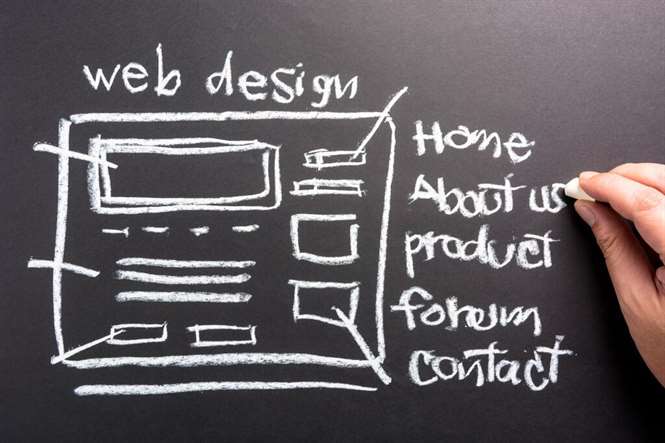Content
This can be problematic in our fast-paced world, where everything can change within the timeframe of the project. Time and materials contracts work best when the scope and duration of a project is unpredictable before work begins. The simplicity of a time and materials contract ensures the contractor a profit but adds an administrative burden in terms of tracking time and costs. However, good accounting software can automate much or all of that added burden.
That allows you also to show the app to potential users or investors quicker. Changing requirements may be caused by a competitive environment when competitors often release new features. Material arranging guarantees that stock levels are kept up at their base levels. Yet in addition, guarantees that material and product are accessible at whatever point creation is booked, consequently, helping in coordinating request and give.
Mục lục
Risks involved in time and material contracts
But our time-and-materials model fosters collaboration between the Detroit Labs team and your company, contributing to the success of your project in the long term. While overhead and profit margins are fixed, the contractor must still adhere to a budget in order to stay under this NTE price. Most T&M contracts are written so that the risk of cost overrun, without legitimate change orders, is on the contractor. As we discussed above, however, this risk is indirectly passed through to the client.
- Jim Slattery most recently served as General Counsel at Regional News Network, a large owner of broadcast television stations.
- In a fixed price contract scenario, cost overruns are primarily the contractor’s concern and not the client.
- In a time and materials contract, the buyer has to pay the seller for all time and materials, and often it involves an incomplete scope definition.
- In this arrangement, overhead for staff is billed hourly along with other project costs, rather than a percentage of the work.
- If yes, the various facts about these two factors discussed below will definitely assist you choose wisely the right option for your project.
Time and Materials contract considers many factors when proposing an hourly rate for software development services. That also includes, for example, salary of each employee involved in the project or time and money spent on face-to-face meetings. It is worth to remember, that this contract includes project management, communication with the development team and other work that is required to develop and implement the product. The contractor might also include a maximum price for the project — commonly called a “not-to-exceed” clause — as a guarantee to protect the client against runaway costs. When the hiring party does not know how long the job will take, how much it will cost, or how rigid the conditions will be, this form of contract is pursued.
Fixed Price vs. Time and materials
You are charged a total price for a project instead of for hours or tasks. A fixed price contract outlines what a vendor is required to do for a firm price. https://globalcloudteam.com/ Your involvement – In a fixed fee contract, you participate in initial meetings when you clearly define the scope of a project and needed features.

In construction, time and material refers to a contractual arrangement where the client pays the contractor for their exact costs of construction, plus a fixed overhead and profit margin. The costs the client pays are the exact costs of the contractor, including labor, equipment, materials and other subcontractors. Overhead and profit margins are typically billed on a percentage of the costs. Every contract comes with pros and cons that are crucial to assess before you begin crafting the specific contract for the individuals or organization you’re working with. But what are the advantages and disadvantages of time and materials contracts?
First, contractors will need to spend money up front on overhead expenses. In the planning stages of a project, the contractor’s management team will be working hard to get the project in motion, which will require substantial hours of effort by the team. However, overhead is typically billed and paid based on the costs of the work.
How does fixed price work in practice?
Then organizations can have a clear insight into what is most suitable for their outsourcing projects. The administrator of your personal data is Da Vinci Studio LLC based in Bielsko-Biała (“Administrator”). These items allow the website to remember choices you make and provide enhanced, more personal features. For example, a website may provide you with local weather reports or traffic news by storing data about your current location. Finally, ending up with a better product reduces the business risk of your enterprise. You start the cooperation quickly, so the first results also can be seen faster.

This option is recommended especially when the requirements specifications as well as rates can be predicted or figured out easily. The client is supposed to provide his/ her own views so that developers can offer services and/ or products that will suit his or her own needs in the long run. If the estimate is too large, the contractor loses the project to a lower bidder.
What Is Underbilling? | Construction Industry Accounting
Generally Accepted Accounting Principles , or IFRS 15 in countries where International Financial Reporting Standard is required. Without the right software, these would be labor-intensive and time-consuming processes for any contractor. The Time & Material model is used if there is no whole vision of the final product and its implementation specifics and if it is impossible to divide it into several smaller stages. This option is fully negotiable and can use an hourly, daily, weekly or monthly rate for the amount of work, tasks, resources, materials, or other expenses that were applied in the development process. In order to prevent the uncontrolled price growth for support projects, the client can discuss the upper limit for the project budget beforehand.

In software development, it’s hard to predict so many aspects upfront. You can’t have a finger on the pulse – you revise the product once it’s finished. There’s a risk connected to the quality of a product and the fact that it will fulfil your requirements, and another, connected to possible changes and challenges that may affect the budget. Plus, you need to remember that you pay for each change that wasn’t covered in a contract. With a fixed price contract, you set aside a certain job and give instructions. You set a certain amount of time and money needed to perform a task.
Tips for Managing an IT Outsourcing Contract
A time and material contract allows you to be flexible while working on a long-term project with frequent changes in requirements. Gives you the freedom you need in your contract as you’re going to have to pay a predetermined price for the materials and time taken to finish the project. In this article, we will discuss the advantages and disadvantages of each contract type to clarify their practical application for software schemes. Time and materials contract works well when the project scope can’t be precisely determined because of the high complexity or external factors (e.g. market changes). Before you can start the project, you need to analyze the market and predict what will work for your users and business.
Up-Front Pricing
We know from experience how dynamic work on a project can be, so we consider freedom in joint activities as a key element of cooperation. Thanks to Time and Material, we can also avoid long-lasting negotiations and analyzes and start implementing the project quickly. In general, time & materials contracts make cooperation more comfortable and the project less risky.
Vendors complete payment for the entire project after the finished product is delivered. It included taking part in meetings, giving feedback, and participating in the process of choosing priorities for the next iteration. By being engaged, you can be sure that the final outcome won’t surprise you and you’ll be able to test and comment on each feature taking care of its quality. Together with a contractor, you establish the estimated project’s timeline along with needed resources.
In these planning periods, the project will not have much cost, and therefore the amount of overhead the contractor can be paid is little to none. You don’t know the final cost of your project, but unlike the fixed-price model, you are not committed to the business relationship with a software house until the end of the contract. Finally, a T&M contract lays out the expected costs for materials, including costs for transportation and taxes.
Even if the project manages to avoid those risks, the final price will remain the same. Time and Material pricing is based on billing customers for the working hours of specialists and for all the materials or resources used. The cost of the work fixed price vs time and material is calculated from the set hourly rates of each development team member. Fixed price agreement refers to a single- sum contract whereby the service provider is supposed to complete the project assigned using the amount set in the agreement.
With TMM the client is able to modify the workload, revise materials and design or even change the work plan in a course of project’s implementation. It helps keep pace with constantly changing business circumstances. Generally, our customers hire us because they need our expertise, and we provide support throughout the process. Time-and-materials pricing allows us to offer this level of service and maintain our promise of being good stewards of your project.
Unlike the Fixed Price Model, the development team is not restricted by rigid budgets and timelines under the TMM. This creates the opportunity of presenting clients with the most contemplated and therefore effective solutions. Time and materials contracts are best when the scope of the job or its duration cannot be determined before work begins, as is sometimes the case in construction projects. When renovating an old building, for example, removing walls may uncover rot or other damage not visible before the job started. Another situation ripe for a time and materials contract is when the materials prices are likely to change. Perhaps lumber costs or gas prices are predicted to rise significantly over the duration of the job.
Instead of estimating and scoping the entire project upfront, both clients and their development partners get some wiggle room to learn and pivot based on each progressive iteration. As you can see, these two types of contracts are completely different. They offer diverse levels of flexibility and are suitable for alternative sets of requirements. Now, we can take a closer look and see who can benefit from each price model and what are their pros and cons. This time and materials contract template provides the main structure and core components contractors can customize to the requirements of their project.
Learn how a mechanics lien can help make sure your company… What is a cost-plus contract and how is it used in the construction industry? My contractor was paid entirely under his contract for work performed. For example, if you want a 15 percent profit margin, you’d use the following calculation (75 x 1.15)—which adds 15 percent on top of your base labor rate and overhead costs. As we are a web development company, we work with web projects every day and can tell a lot about them.
